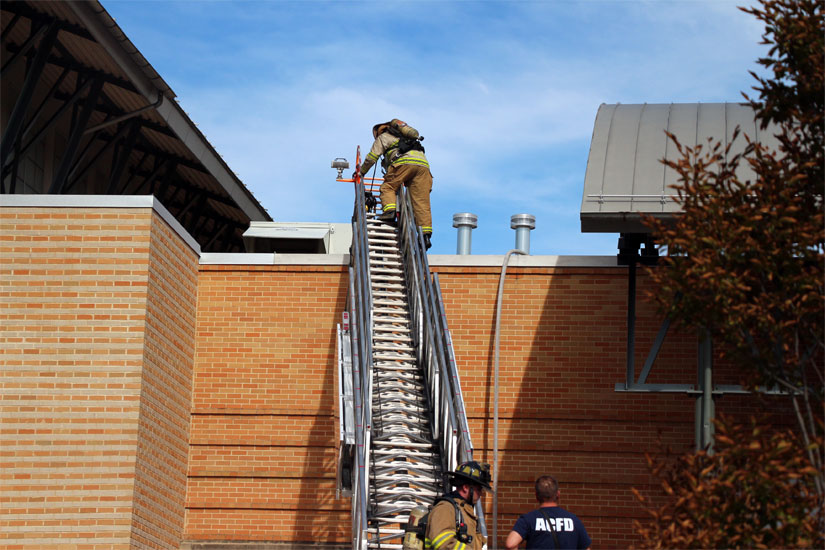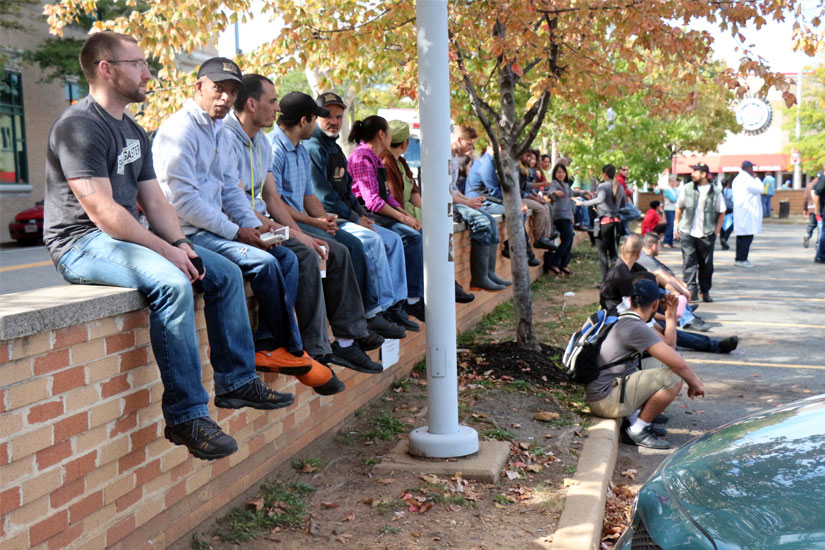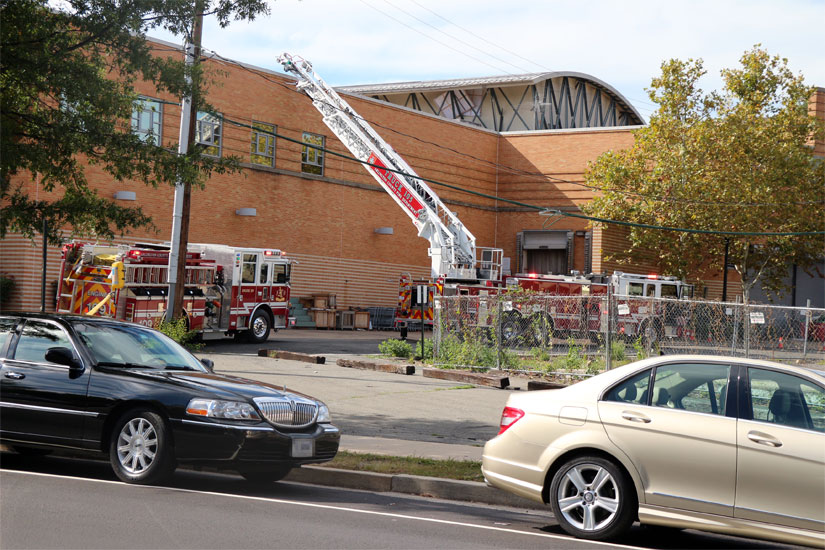It’s easy to walk past the Arlington County Detention Facility without realizing the high-rise with reflective windows is a jail.
Nestled between office buildings and apartment towers, the 12-story building at 1435 N. Courthouse Road, just a block from the Courthouse Metro station, houses nearly 500 male and female inmates.
On a recent tour of the facility, assistant operations director Capt. Jimmie Barrett Jr. said the jail offers more than 100 therapeutic and recreational programs to minimize disruptions and reinforce positive behavior.
“This is what jail is,” he said as he walked ARLnow through quiet cell blocks. “It’s not a lot of loud screaming or yelling. It’s about creating some structure to help people go on with life.”
Sessions on addiction, foreign languages and money management are among the program offerings, and quilting is one of the most popular activities for men and women alike. Started about two years ago by a jail employee who quilts in her free time, the sessions are now held three times per week.
“It started as a small group of women and expanded. Now the men are doing it, too,” Barrett said.
The inmates make baby blanket-sized quilts on the jail’s sewing machines, using donated materials. Many of the quilts are given to the local nonprofit Borromeo Housing Inc., which aids homeless young mothers and their children.
“It’s like a photograph. It’s something you can keep forever,” one female inmate said about the quilts she made. “It’s homemade, and I’m really sentimental.”
The inmate, a 22-year-old Arlington native charged with credit card fraud, said she planned on continuing to quilt once she leaves her current cell block of 41 women.
As of Friday, the jail built in 1994 housed 410 men and 58 women, for a total of 468 people. Inmates include people awaiting trial, awaiting sentencing and those sentenced to 12 months or less.
On a Yelp page created for reviews of the facility — which got comedian Stephen Colbert’s attention in 2013 — inmates praised the “polite” staff and the jail’s library.
“I almost asked for a couple of extra days I haven’t been able to catch up on my reading like that in YEARS!!” an apparent ex-inmate wrote in October.
The jail includes a full legal library, with rows of hardcover tomes. Inmates increasingly prefer to use the online tool LexisNexis to learn about laws and their rights, corrections analyst Cristen Bowers said. Librarians there try to get inmates the reading material they want.
“If they request a book and we don’t have it, we’ll get it from another library,” Bowers said.
Inmates stay in single- or double-occupancy cells with an early wakeup time. Breakfast is served about 5:30 a.m., and then guards inspect inmates’ cells about 7:30 a.m. Lunch is served about 11 a.m., and guards conduct surveillance walk-throughs every 30 minutes. Dinner is served about 4:30 p.m., and lights out is at 11:30 p.m.
Inmates are allowed two 20-minute visits twice a week, not including meetings with lawyers.
With the exception of maximum security units on the building’s 11th floor, inmates are allowed to attend programs based on their compliance to jail rules. Inmates who break rules can be placed in solitary cells for “disciplinary segregation,” Barrett said. Those who are a danger to themselves or others can be put into “administrative segregation.” The separations can last as little as an hour or extend for weeks, said Barrett, a 23-year veteran of the facility.
Maximum security units are located on the jail’s 11th floor, where just 18 men were held as of Friday. The inmates there are confined to their cells and served meals through slots in the doors. Whether they must remain on that floor is reassessed weekly, Barrett said.
Officers assigned to booking see a rush of people on Friday nights, Saturday nights and holidays, mostly for public intoxication, they said.
Detainees are escorted into the facility through back doors, some of which are connected to the court next door. Footprints painted on the floor show where they must stand as they wait to be fingerprinted and have their mugshot taken.
Every detainee receives a handful of pamphlets guiding them through everything from how to report sexual misconduct to what personal items they’re allowed to keep, like a wedding band without stones, worn only on the left ring finger.
“Think of it like your first day of college,” Barrett said. “You’re getting oriented.”

















































